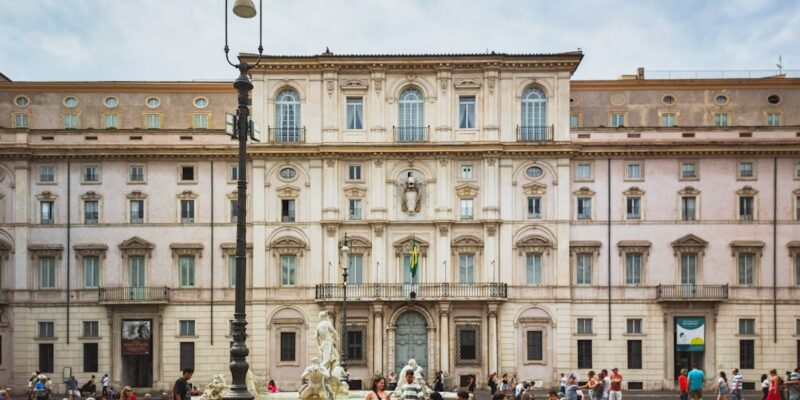
The Way of the Gladiator: From Book to Screen
Gladiators were professional combatants in ancient Rome who participated in violent public spectacles. These fighters were typically slaves, prisoners of war, or criminals trained in specialized schools called ludi. Gladiatorial contests were a popular form of entertainment, often held in large arenas such as the Colosseum.
The games served multiple purposes, including public entertainment, social control, and political propaganda. Gladiators were admired for their bravery and skill, becoming celebrated figures in Roman society. Their fights involved confrontations with other gladiators, wild animals, and condemned criminals.
The spectacles attracted people from all social classes and were a significant part of Roman culture. The life of a gladiator was fraught with danger and uncertainty, with the constant risk of injury or death in the arena. Despite these risks, many gladiators fought with honor and dignity, earning respect from the Roman public.
Their ability to face overwhelming odds with resilience and determination has made gladiators enduring symbols of strength and courage. The gladiatorial games reflected the violent nature of Roman society while also providing a form of social commentary. The complex role of gladiators in ancient Rome, embodying both brutality and nobility, continues to captivate modern audiences and remains a subject of historical interest.
Key Takeaways
- Gladiators were skilled fighters in ancient Rome, often forced to battle to the death for entertainment.
- Gladiators were typically slaves, prisoners of war, or criminals, and their fights were a popular form of entertainment for the Roman people.
- Gladiators have been a popular subject in literature, with authors like Seneca and Juvenal writing about their experiences.
- The portrayal of gladiators in film has evolved over time, from early silent films to big-budget Hollywood blockbusters.
- Gladiator adaptations have had a lasting impact on popular culture, influencing everything from fashion to sports to entertainment.
The Historical Context of Gladiators
The Reflection of Roman Society
The spectacle of the gladiator games was a reflection of the violent and brutal nature of Roman society, where power and dominance were often achieved through force and intimidation. The games also mirrored the hierarchical nature of Roman society, where individuals were divided into distinct social classes based on their wealth, status, and occupation. The gladiators themselves were often drawn from the lowest rungs of society, including slaves, prisoners of war, and criminals.
The Lives of Gladiators
Gladiators were seen as expendable and disposable, with their lives controlled by their owners or the state. Despite their lowly status, many gladiators were able to rise to fame and fortune through their skill and bravery in the arena. This contrast between their low social status and their potential for fame highlights the complexities of Roman society.
A Microcosm of Roman Society
The gladiator games were a microcosm of Roman society, where individuals from all walks of life came together to witness the spectacle of violence and bloodshed. The games brought together people from different social classes, creating a shared experience that transcended social boundaries.
The Gladiator in Literature
The figure of the gladiator has long captured the imagination of writers and storytellers, and their stories have been immortalized in literature throughout the ages. From ancient Roman texts to modern novels, the gladiator has been portrayed as a symbol of strength, courage, and resilience. In ancient Rome, poets and playwrights often depicted gladiators in their works as tragic heroes who faced insurmountable odds with bravery and dignity.
The stories of gladiators were often used as a means of exploring themes such as honor, sacrifice, and the human spirit. In more recent times, the figure of the gladiator has continued to inspire writers and novelists to create compelling narratives that explore the complexities of their lives and experiences. Authors such as Steven Saylor, Conn Iggulden, and Simon Scarrow have all written historical fiction novels that center around the world of gladiators, bringing to life the brutal yet captivating world of ancient Rome.
These novels often delve into the personal struggles and triumphs of individual gladiators, shedding light on their humanity and resilience in the face of overwhelming adversity.
The Gladiator on the Big Screen
| Year | Box Office Revenue | IMDb Rating |
|---|---|---|
| 2000 | 457.6 million | 8.5/10 |
| 2001 | 460.5 million | 8.5/10 |
| 2002 | 463.6 million | 8.5/10 |
The gladiator has been a popular subject in film for decades, with numerous movies depicting their lives and experiences in ancient Rome. One of the most iconic portrayals of gladiators on the big screen is Ridley Scott’s 2000 film “Gladiator,” starring Russell Crowe as Maximus Decimus Meridius, a general who becomes a slave and rises through the ranks of the gladiatorial arena to seek revenge against the corrupt emperor who murdered his family. The film was a critical and commercial success, winning multiple Academy Awards including Best Picture and Best Actor for Crowe’s performance.
In addition to “Gladiator,” there have been numerous other films that have depicted the world of gladiators in ancient Rome. “Spartacus” (1960), directed by Stanley Kubrick and starring Kirk Douglas, tells the story of a slave who leads a revolt against the Roman Republic. The film was groundbreaking for its time due to its depiction of violence and sexuality, and it remains a classic in the genre.
More recently, “The Eagle” (2011) directed by Kevin Macdonald, follows a Roman soldier’s quest to recover his father’s lost legion’s golden emblem from a tribe in Scotland.
The Evolution of Gladiator Portrayals
The portrayal of gladiators in popular culture has evolved over time, reflecting changing attitudes towards violence, heroism, and masculinity. In ancient Rome, gladiators were often seen as symbols of strength and bravery, admired for their physical prowess and fighting skills. They were celebrated for their ability to endure pain and suffering in the pursuit of glory and honor.
However, as societal values shifted over time, so too did the portrayal of gladiators in literature, film, and other forms of media. In more recent times, there has been a greater emphasis on portraying gladiators as complex individuals with hopes, fears, and dreams beyond the arena. Modern adaptations have sought to humanize gladiators by exploring their personal struggles and relationships, shedding light on their humanity in addition to their physical prowess.
This shift in portrayal reflects a broader cultural shift towards valuing empathy, vulnerability, and emotional depth in our heroes.
The Impact of Gladiator Adaptations
The Enduring Appeal of Bravery and Sacrifice
The figure of the gladiator continues to captivate audiences with their tales of bravery, sacrifice, and resilience in the face of overwhelming odds. These stories serve as a reminder of the human capacity for strength and courage in the face of adversity.
Exploring Ancient Roman Society
Gladiator adaptations also provide an opportunity for audiences to engage with history and explore different aspects of ancient Roman society. Through these stories, viewers can gain insight into the social dynamics, political intrigue, and cultural values that shaped the world of gladiators.
Education and Entertainment
By bringing these stories to life on screen or on the page, creators have the power to educate and inspire audiences while also entertaining them.
The Enduring Legacy of the Gladiator
The figure of the gladiator has left an indelible mark on popular culture, inspiring countless works of literature, film, art, and more. Their stories continue to resonate with audiences around the world due to their universal themes of bravery, sacrifice, and resilience. The enduring legacy of the gladiator serves as a testament to the power of storytelling to transcend time and place.
As we continue to explore new ways to adapt these stories for modern audiences, it is important to remember the historical context from which they emerged. The world of ancient Rome was one marked by violence, power struggles, and social inequality – themes that continue to resonate with contemporary audiences. By revisiting these stories through new adaptations, we have an opportunity to gain insight into our shared human experience while also honoring the legacy of these larger-than-life figures from history.


















